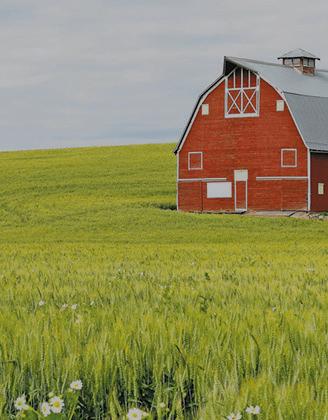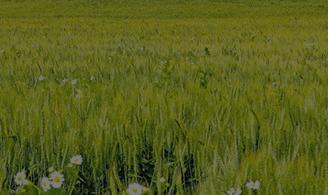

Overlooking nothing. Ready for everything.
Farmers and ranchers, the world relies on you. And you deserve a bank that’s rooted in the details and dedicated to helping you do more.
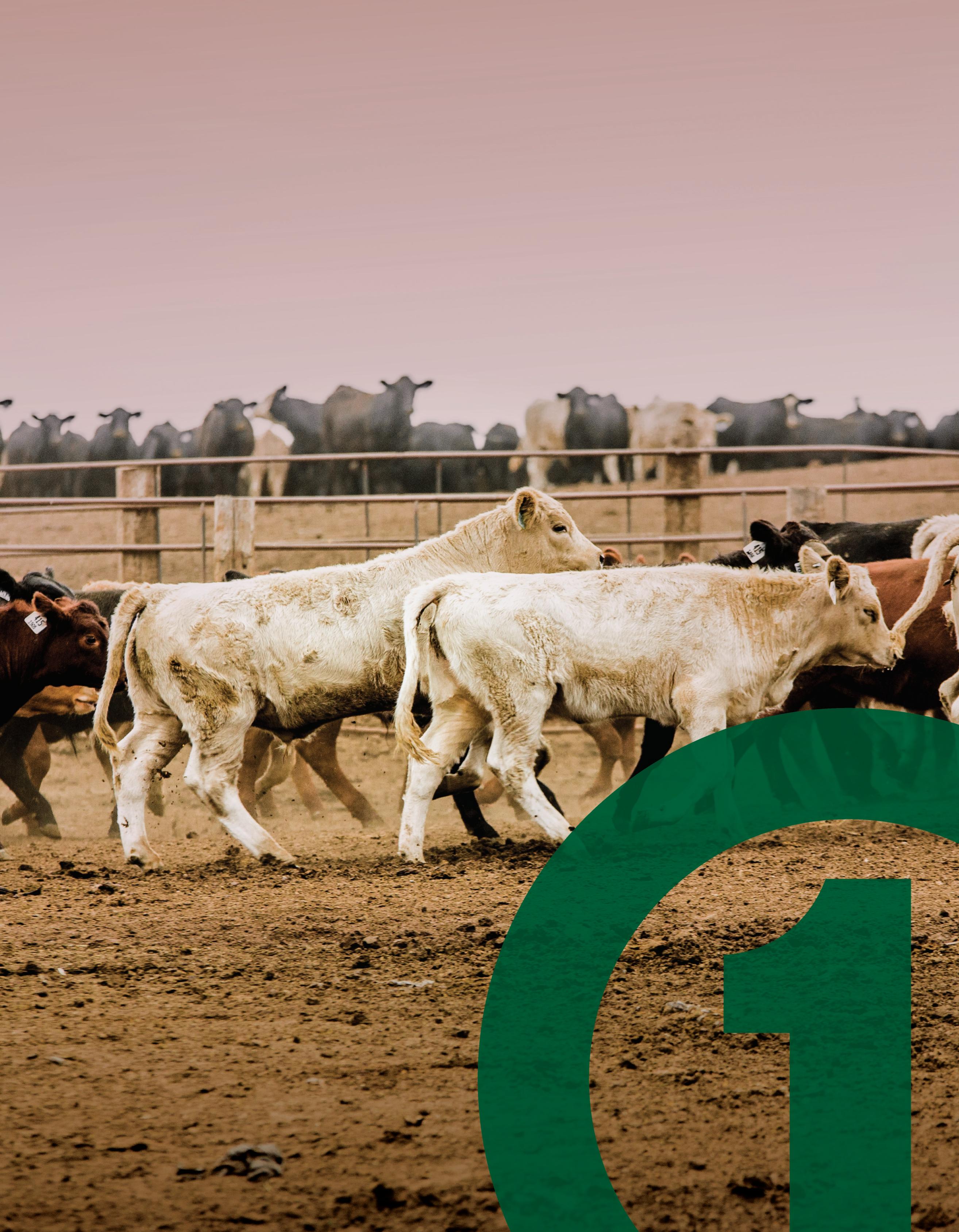

DeKalb County
ag
mag

4 W EATHER TOOLS
Assist farmers with management decisions
6 PESTICIDES
Changes coming will impact future applications
8 CROP ROTATION
Important for reducing corn rootworm damage
10 CARBON DIOXIDE
Plant tissues use sun power to absorb carbon dioxide

Weather Tools
assist farmers with management decisions
 By: Martha Blum • AgriNews Publications
By: Martha Blum • AgriNews Publications
The growing season in Northern Illinois is expanding. According to Trent Ford, Illinois state climatologist at the University of Illinois, the growing season over the last 30 years is about 20 days longer and it’s projected to increase by another 15 to 20 days over the next 20 to 30 years.
Ford, who spoke at the Illinois Crop Management Conference hosted by U of I Extension at the DeKalb County Farm Bureau building in Sycamore, highlighted several tools that turn complex weather observations and climate data into information that’s helpful for those in the agricultural industry.
“Having the best information about weather and climate is not just how warm it is or how much rain is falling, but getting actionable information,” Ford said.
The Midwestern Regional Climate Center is a branch of the National Oceanic and Atmospheric Administration. “Every region has a center, and they specialize in information on past and recent weather and climate conditions that ranges from how warm it was yesterday, how much rain or snow fell and how much snow is on the ground all the way to what the last month or year looked like,” Ford explained.
Anyone can get daily, as well as hourly, information from all the stations.
“They have developed tools that are stakeholder driven like freeze probability and information on wind speed, wind direction and growing degree days,” Ford said. “You can figure out what wind gusts look like on a single minute versus a daily average and you can look at extreme rankings such as how often we’ve hit a level of temperature or heat index.”
One of the programs on the MRCC website shows graphs of growing degree days.
“You can see the growing degree days in 2023 compared to the 30-year average,” Ford said. “It will also estimate based on 108day corn the number of days to reach silking or black layer. Last year, silking happened the last week or two of July, so within a season you can look at the growing degree days in your county relative to past years.”
Since this winter has been so mild, the soil temperatures are warmer than normal.
“We can compare that to a year we were also running ahead of normal for temperatures like 2012,” Ford said. “So, it’s not just a tool where you look back on what happened the last one to two years. Within a season you can see how you’re doing.”
The Illinois State Climatologist website has maps of precipitation for the last 30 and 90 days, as well as updated soil moisture and drought information. Illinois soil moisture conditions are updated daily. Maps of water table levels are available, which is more relevant this year than the past couple of years.
“One of our 19 stations is in DeKalb, and we show soil moisture conditions at 4-, 8- and 20-inch depth,” the climatologist said. “The 4- and 8-inch amounts are bouncy this time of the year because of the frozen soils so the sensors wig out.”
Ford explained that for DeKalb, the top 20 inches of soil is looking quite wet right now and in some cases above saturation. “The water table is the barrier between the unsaturated and saturated soils and this time of the year we expect the water table to be 3-to 4-feet deep. We came into this year a little deeper than normal.”
The good news – it is not like January 2013.
“We had almost a 20-feet deep water table after the 2012



drought, which really depleted not only the top soil layer, but pushed the water table way down,” Ford said. “The average water table depth for August, September and October is 5 feet deep, so roots only have to penetrate 5 feet to find an unlimited supply of water.”
“For precipitation, we don’t see any risk of exceptionally wet conditions across the Midwest. There is a slight risk of heavy precipitation on the West Coast.
–Trent Ford, Illinois state climatologist at U of I
“According to Ford, we see big drought impacts when water tables plummet and roots can’t find an adequate supply of water, so water table levels tell us a little more about when drought conditions turn into big drought problems than soil moisture can.
Ford says water table depth information is updated weekly. “It is something to check, especially if we go into a drought.”
Jamie Herring, who grows corn and soybeans on his farm near Esmond, said he is content with the soil moisture conditions at this time. “I’d rather have it a little on the drier side than wetter.”
Herring likes to analyze historical weather data to evaluate the impacts weather has on his farming operation. “It could be a bad situation or maybe it is a little bit closer to the trend and you don’t realize that until you dive into the information.”
The Climate Prediction Center has a hazards outlook page that features a 14-day outlook for hazards. “For precipitation, we don’t see any risk of exceptionally wet conditions across the Midwest,” he said. “There is a slight risk of heavy precipitation on the West Coast.”
The center provides the same type of information for snow and wind. The data is updated every day and it includes expert discussion about all the hazards that are predicted for the next two weeks.
It is difficult to project the impact of changing climate conditions on crop yields in the future, the climatologist said. “It requires a tremendous amount of data,” said Ford. “The Climate Toolbox takes all of that information from models and makes it accessible for targeted analysis by 2050 or 2080,” he explained.
“For example, this is the high heat index days in Du Quoin, Illinois, and in the 1990s there were 60 days on average,” he said. “In the 2050s, that is projected to increase to 97 days, so the trend is upward.”
The Illinois State Water Survey provides a Pest Degree Day Calculator that includes 18 specialty crop pests and 12 commodity crop pests. “It is based on temperature, growing degree days and other weather information,” Ford said.
“We can look at current conditions and projections of where a pest will be in its life stage over a growing season,” he said. “This year with such mild conditions, it’s a possibility that some of these pests may be more advanced in their life stage.”
The soil temperature measurements will be really helpful to predict when the cicadas will come out this year, Ford said. “The brood in northern Illinois is really dense and very responsive to soil temperatures,” he said.
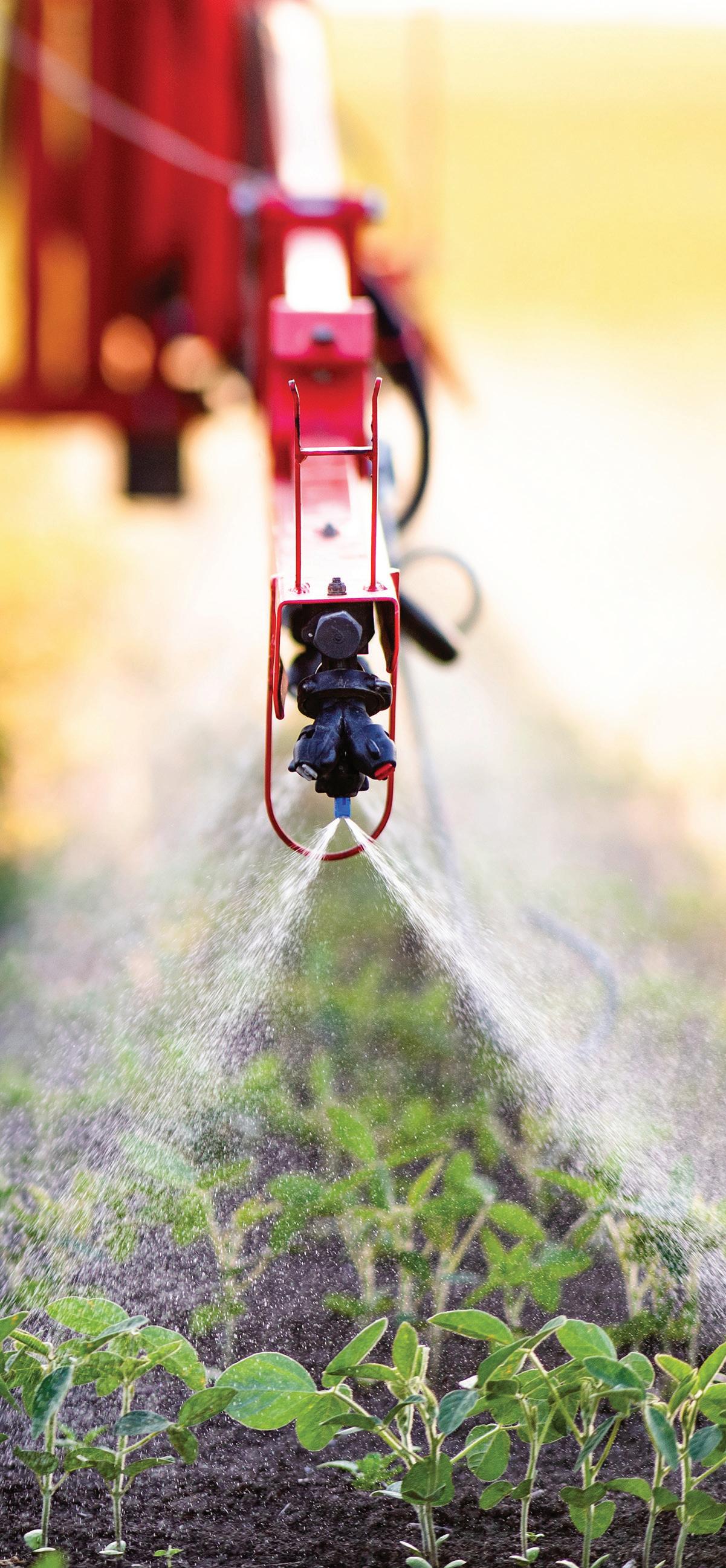
 Aaron Hager
Aaron Hager
Changes coming will impact future pesticide applications
By: Martha Blum • AgriNews PublicationsFarmers are going to experience dramatic changes in the way they apply pesticides to their crops in the future.
“The Endangered Species Act is something that will fundamentally change how we apply pesticides in Illinois very shortly,” said Aaron Hager, University of Illinois Extension specialist in weed science.
“That is based on what the U.S. Environmental Protection Agency has proposed in terms of different practices they feel will bring that agency into compliance with their obligations under the Endangered Species Act,” said Hager during a presentation at the Illinois Crop Management Conference hosted by U of I Extension at the DeKalb County Farm Bureau building in Sycamore.
“Our hope is by the time something is set in stone that it looks nothing like the original proposals,” he said.
One example is the label for the Enlist technology in soybeans. “That label mandated runoff mitigation practices and you must accumulate four to six points,” Hager said. “It is on a federal label, so that’s the law and you have to do it.”
The U.S. EPA is the agency responsible for registering pesticides under the Federal Insecticide, Fungicide and Rodenticide Act, which was passed in 1972.
“It is a risk-benefit statute, so you can’t do anything that will cause unreasonable risk to man or environment, but taking into account the economic, social, and environmental costs and benefits,” Hager said. “The agency can look at the benefits of the registration, and if the analysis says the benefits of registering the pesticide outweigh the risks, the company can bring that product to the marketplace.”
The Endangered Species Act was passed in 1973 and it is administered by the Fish and Wildlife Service and the National Marine Fisheries Service. The purpose is to protect threatened and endangered species from extinction.
“The big difference between FIFRA and ESA is the ESA says if there’s any risk to a threatened and endangered species or its critical habitat, all the federal agencies have to comply with the Endangered Species Act,” Hager said.
Typically, endangered species will not be growing in a corn or soybean field. “However, if the endangered species is growing three miles downstream of the cornfield in a ditch bank, what you’re doing in that field could potentially impact the critical habitat,” Hager explained. “The ecological footprint on a product application may exceed the boundaries of a field.”
More attention has been focused on the Endangered Species Act after comments were made by Jake Li, deputy assistant administrator for pesticide programs at EPA, who acknowledged the EPA has ignored its requirements under the ESA for decades.
“So, around 80 percent of all pesticides were registered not in compliance with the act, so if a court hears a case, the court can vacate a label,” said Li, a specialist in weed science.
The regulatory landscape has shifted, Hager said, for companies that are bringing new products to the marketplace or a new use pattern. “Any change in a use pattern of a product could trigger an Endangered Species Act evaluation,” he said. “And it is easy to file a lawsuit related to the act – any person can file an ESA lawsuit.”

Any change in a use pattern of a product could trigger an Endangered Species Act evaluation. And it is easy to file a lawsuit related to the act –any person can file an ESA lawsuit.
“ “— Aaron Hager U of I Extension weed science specialist
As of October 2022, Hager said, there were over 1,600 listed endangered species by the Fish and Wildlife Service, and of those, close to 60 percent are plants.“One active ingredient about to go under re-registration is glyphosate, so there is probably going to be a lot of changes.”
The Enlist One and Enlist Duo labels are a good case study of what farmers can expect labels to look like in the future, Hager said.
“The geographic restrictions are what scares a lot of people,” he said. “When these two products were re-registered people had already made seed purchase decisions, and in Minnesota and Oklahoma, they woke up and couldn’t spray Enlist products, which was all Endangered Species Act related.”
The Enlist label states the land manager or applicator must effectively implement the runoff mitigation measures.
“I don’t think the applicators have the responsibility to do that since probably 60 percent to 80percent of all pesticides are not applied by the farmer in Illinois — this is a custom-application state,” Hager said. “And 77 percent of the farm ground in Illinois is farmed by someone who does not own the ground.”
In addition to the labels of pesticides, applicators also need to check the “Bulletins Live! Two,” which change and are considered an extension of the label. “If the product has characteristics that could be jeopardizing an individual species in a limited area, it will go on ‘Bulletins Live! Two,’” Hager said.
“In 2019, there were 27 Illinois counties primarily along the Illinois River that were listed as having one of the species where the buffer had to be extended for dicamba and you had to put in the 57-foot omnidirectional buffer and two years later that number went from 27 to 18,” he said. “Fourteen counties listed in 2019 were no longer listed in 2021, but five counties not listed in 2019 were listed in 2021.”
Hager strongly encourages all farmers to make comments whenever the comment period is open. “That is your one opportunity to shape how these registration changes are going to happen,” he said.
When making comments, it is important to include specific information about the topic.

a particular practice or they can not accumulate the total number of points because of this reason, they will listen to that,” Hager said. “You can also make suggestions and they will read and consider them.”
“The federal government is focused on agricultural crops and conventional pesticides because you’re the biggest user of those technologies,” he said. “I can’t think of a single example of an endangered species that has gone extinct directly due to pesticide use. If we haven’t caused that in the past, and now we have all these new things we have to do, I don’t know what success looks like to the EPA.”

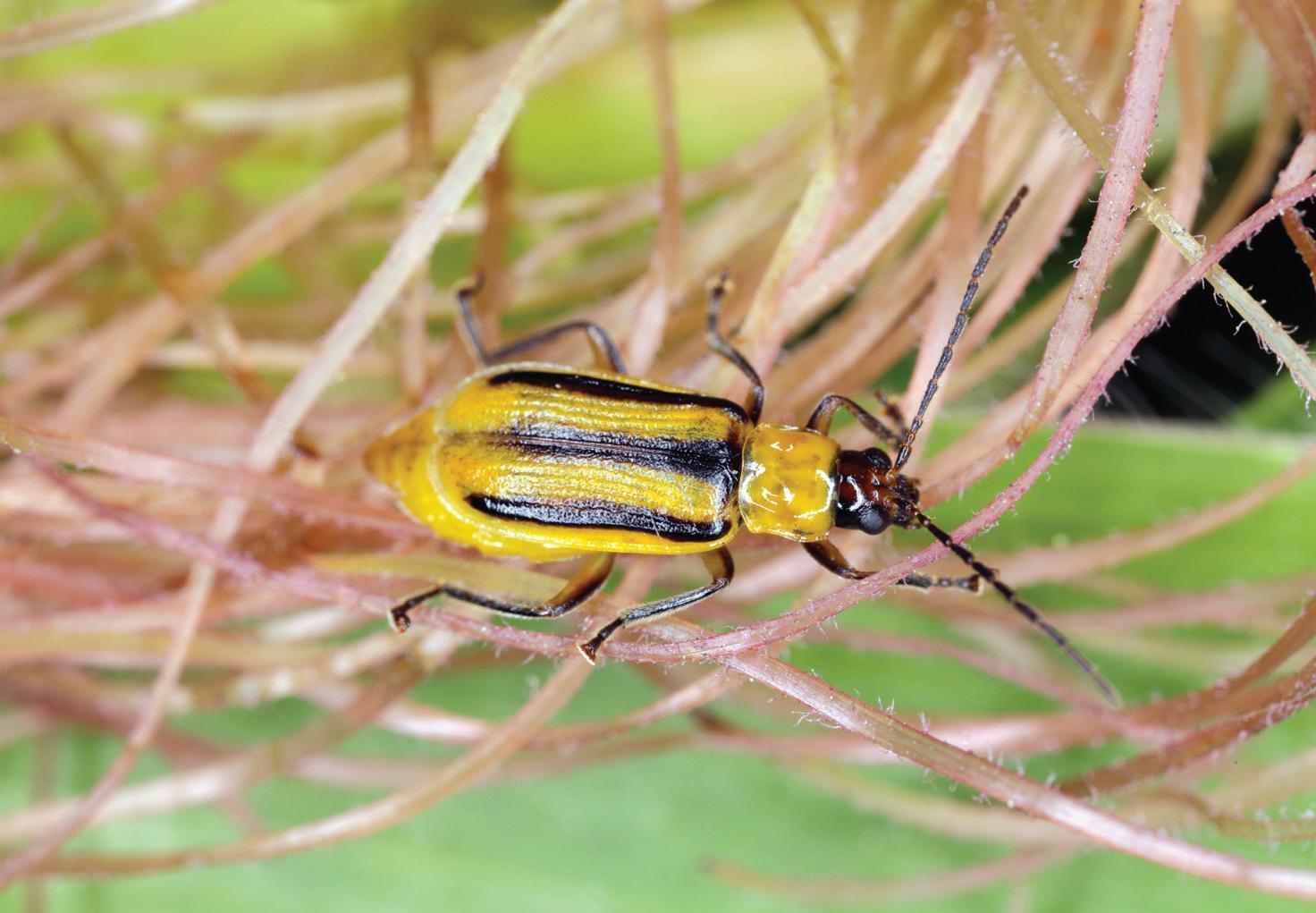

Crop rotation important for reducing corn rootworm damage
By: Martha Blum • AgriNews PublicationsFarmers in northern Illinois are at the epicenter for dealing with corn rootworms in their fields.
“When you go south of I-80 to areas that are heavily one-to-one corn-soybean rotation, the rootworm populations are tiny,” said Nick Seiter, assistant professor at the University of Illinois. “But up here in DeKalb, Ogle, Lee, and into Stephenson counties, we’ve got plenty of beetles in areas where we have a lot of continuous corn.”
The Western and Northern corn rootworms are the two species that are important for Illinois farmers, said Seiter during a presentation at the Illinois Crop Management Conference hosted by U of I Extension at the DeKalb County Farm Bureau building in Sycamore.
“For many years, the Western has dominated, but over the last five years, we’ve started to see more Northerns back in the system,” the university professor said.
“What is likely happening is the second protein in most pyramids, Cry 34/35, is very good against the Western corn rootworm and in general it’s a little more iffy against the Northern corn rootworm,” he explained. “But the Western is the species that’s more important to control and that toxin does a better job on that insect.”
The two species of corn rootworm have biological differences. As an adult, the Northern corn rootworm gets up and travels a little further than the Western. “You probably have a little better genetic mixing of those populations as a result of that dispersal,” Seiter said.
The Northern corn rootworm will go through an extended diapause, with a multi-year lifecycle. The development of resistance is measured by the generations of an insect.
“Part of the Northern corn rootworm population is going through a multi-year generation, which means it takes two, three, or sometimes four years for that insect to go through a generation,” the university professor said. “So, it makes sense it would take longer for resistance to Bt proteins to occur.”
When there is injury in first-year corn, Seiter said, it is likely due to extended diapause in Northern corn rootworms rather than egg lay in soybeans by Western corn rootworms. Although there is a lot of fieldto-field variability, the U of I survey data shows the Northern corn rootworms have been increasing over the last few years.
“Historically, our overall corn rootworm population in the state is still a lot lower

than it once was because the pyramid Bt hybrids have reduced numbers considerably,” Seiter said. “The control you get with an effective trait package is much greater than we see with a soil insecticide, so we have a lot of vested interest in maintaining the traits.”
Jamie Herring planted SmartStax hybrids in 2023 on his farm near Esmond and he said he hasn’t had any challenges with corn rootworm. Going into this year, he said he won’t be using SmartStax because of his rotation.
Herring decides on the number of corn and soybean acres he plants based on the markets.
“I’m growing more soybeans this year,” he said. “I’m growing 60 percent soybeans and 40 percent corn, which will all be firstyear corn.”
The single rootworm trait introductions occurred in 2003 and 2005, followed by the pyramid trait introductions in 2008 and 2009. “That’s when we really started to see populations overall decline,” Seiter said. “But we have field evolved resistance in Western corn rootworm to all four proteins and we’ve got resistance to all four in Northern corn rootworm that hasn’t been confirmed yet.”
According to Seiter, the major reason there’s been a loss of susceptibility to these traits relatively rapidly for corn rootworms is a failure to achieve a high enough dose to kill insects that have just one resistant allele.
“Ideally we want resistance traits to be recessive so if they have one allele and they are exposed then they die, but that hasn’t been the case with corn rootworm as it has been with corn borers,” Seiter explained.
The first commercial release of SmartStax PRO occurred last year. Though there are several other RNA interference or RNAi traits coming down the pipeline.
“RNAi is going to be deployed with Bt proteins and there is a good reason for that,” Seiter said. “With pyramid trait packages we’re trying to accomplish redundant killing, which means if you have a rare insect that’s resistant to one of those components, hopefully, it’s susceptible to one of the others and it will kill that insect.”
Bt and RNAi have different modes of action.“The RNAi mode of action has nothing in common with the Bt mode of action other than the insects have to ingest the material,” Seiter said. “So, the

probability of cross-resistance between RNAi and Bt is extremely low.”
One of the disadvantages of the RNAi mode of action is that it is relatively slow to act, the university professor said.
“When you have an effective Bt protein, the insect feeds on the Bt protein which binds in the gut of the insect so the gut is no longer able to absorb nutrients,” Seiter said. “In relatively short order the cells of the gut start to burst open and within a few hours after feeding on the material the insect stops feeding.”

Agriculture

With RNAi, it shuts down the production of the protein that the rootworm needs to survive so the rootworm beetle dies.
“That takes about five days for a dead insect so the insects will be feeding for those five days,” Seiter said.
“When you put RNAi into a Bt-resistant situation, you should get a dramatic reduction in adult survival because that’s one of the real strengths of this mode of action,” he said. “But you’re not going to reduce pruning to zero if you have a Btresistant population.”
For farmers with a corn rootworm problem, the best thing they can do is rotate to a non-host crop. “We don’t have options for rotating modes of action because even the new trait packages still include Bt,” Seiter said.
Seiter predicted RNAi is going to be pretty good for killing beetles, but its overuse, continuing to throw it at that problem, will eventually be a loss in those fields. “A lot of the resistance stays somewhat local, so it takes a little bit to move through the population. So, your field history matters quite a bit in your resistance development.”





Plant tissues use sun power to absorb carbon dioxide Emily Heaton
By: Martha Blum • AgriNews PublicationsPerennial crops are key tools for regenerative agriculture. “In our prairie systems, most of the carbon in the soil used to be in the air — it didn’t come from the rocks,” said Emily Heaton, professor and director of the Illinois Regenerative Agriculture Initiative at the University of Illinois.
“Carbon dioxide from the atmosphere is absorbed into plant tissues using the power of the sun and the plants store energy in the form of carbon bonds,” said Heaton during a presentation at the Illinois Crop Management Conference hosted by U of I Extension at the DeKalb County Farm Bureau building in Sycamore. “That energy is released later when you eat the plant or burn the plant and a decent amount of that carbon goes into the soil,” the university professor said.
“When plants do this, they release water, so they de facto mediate the water cycle in the Midwest,” Heaton said. “Something like 70 percent of our rainfall comes from evapotranspiration, which is really different from people on the coasts that get most of their rain from the ocean.”
Midwestern farmers have a lot of opportunities to capture value from their land. “Right now we don’t have anything on our fields, so we have missed opportunities to capture value from our resources,” Heaton explained. “Soil is capturing energy in the form of heat with our black soil, but it’s dissipating at night when it cools off.”
Sometimes people forget that plants are efficient and self-sustaining solar collectors.
“About 6 percent of the sunlight that hits the earth can be captured in plant tissues and that’s basically free energy,” Heaton said. “Crops are the only thing that can help mediate carbon and water cycles, so they provide a lot of useful functions.”
When plants grab carbon from the air, it not only goes to plant biomass, it also feeds the microbiome that lives in the soil. “And perennial crops are a useful tool for keeping water in your field,” Heaton said.
At the Energy Farm on the U of I campus, researchers are growing switchgrass, miscanthus, and energy cane. “We work on energy cane because it’s a relative of miscanthus.” Heaton added, “And miscanthus has been researched in Illinois longer than anywhere in the U.S.”
Miscanthus is currently being used as a fuel source for the University of Iowa power plant. “They are more heavily dependent on coal than they want to be, and in 2012, they couldn’t get coal,” Heaton said. “They already burn cereal byproducts from the General Mills processing plants and the miscanthus has worked out really well.”
The biomass crop is grown on 1,500 acres, which provides about 10 percent of the university’s power.
“They pay farmers to grow it, so that’s $2 million in local farm revenue and the university is not spending money out of state on coal,” the university professor said.
Since plants are one of the best carbon removal technologies, Heaton said, farmers are the ones who can make money because they have the natural resources to capture carbon. “Illinois is strategically positioned to grow stuff, and we’re good at it.”
In addition, Illinois has the opportunity to store carbon in geologic structures. “Because of our geology we have these deep saline shelves where the saltwater helps trap carbon dioxide in deep geologic formations,” Heaton explained. “Because of this Illinois has the largest number of active carbon capture and storage access points in the U.S. and ADM has been the leader in this technology.”
Illinois has an opportunity to make money in ways a lot of people can’t. “Because carbon is a global economy, we can store it here and people from around the world will pay us,” Heaton said.
According to Heaton, growing miscanthus does not work for every farmer. “I don’t think it should be on more than 10 percent of our cropland. It is not a wholesale

replacement for anything we’re doing today, but it compliments our cornsoybean and livestock systems nicely.”
In Iowa, poultry producers are using miscanthus as a replacement for woodchips to bed their poultry barns. “Our pulp and paper industry has been declining in this country for decades so there are less wood chips for bedding,” Heaton said.
“Poultry farmers are growing miscanthus and chopping it for bedding and they are getting improvements in broiler production with bigger, healthier birds that have healthier feet,” she said. “Then they take the spent bedding and turn it into renewable natural gas, so there are lots of different opportunities to make money.”
Additional markets that are developing for biomass crops include sustainable aviation fuel, building materials, kitty litter and packaging materials such as egg cartons.
Heaton discussed ways for farmers to integrate 10 percent perennial crops on tile-drained lands in a way that makes money and improves the farming operation. One option is to grow miscanthus in potholes, which are places where water ponds in a field.
“We have places where it is swampy and the soil doesn’t drain very well,” Heaton noted. “There are places where it was a lakebed thousands of years ago and we have reduced crop yield in these places.”
In 2019, researchers planted miscanthus in three potholes in a corn-soybean field in Iowa.
“The profitability of the potholes goes from nothing to about $800 per hectare, so if you do it right, we make money because we had been losing money on the corn and soybeans,” Heaton said.
The university sells the miscanthus to Tyson for turkey bedding. “The university made $19,000 on the miscanthus they sold from the research plots to Tyson,” Heaton said. “It’s a small market now, but it’s developing.”




that’s about the stories of your life, Imagine a bank and not just about transactions.

We bring neighbors and local businesses together to help you thrive.
We’re here to help you achieve the story of your life.










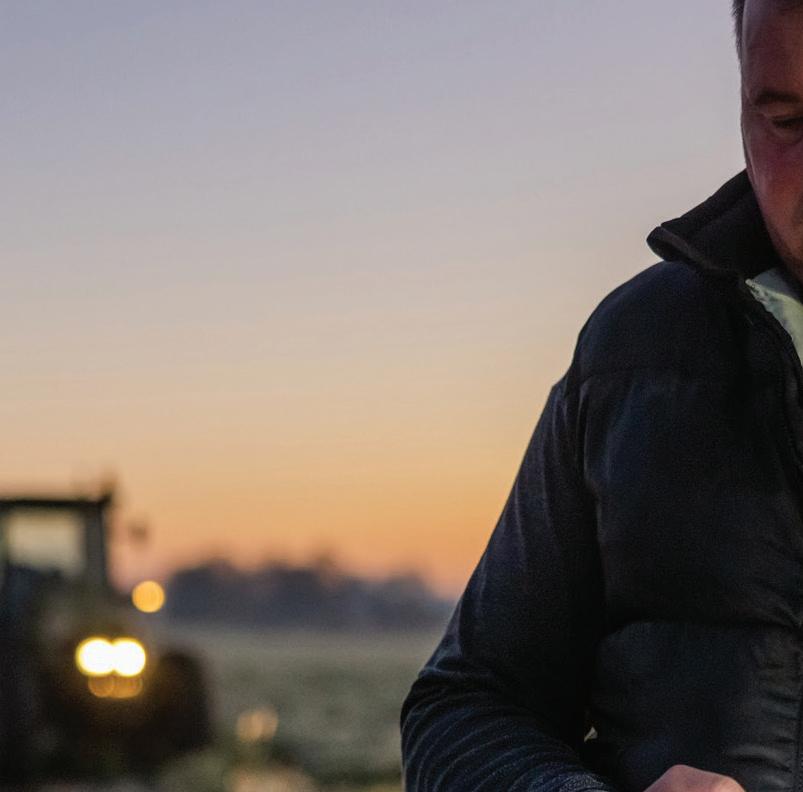




Bank wisely to live confidently.










